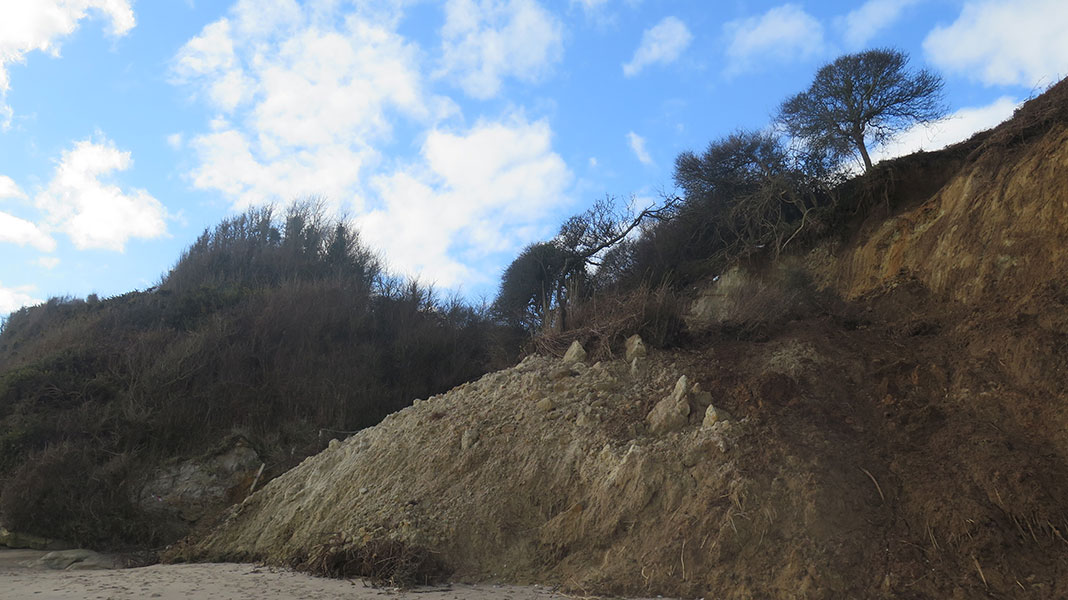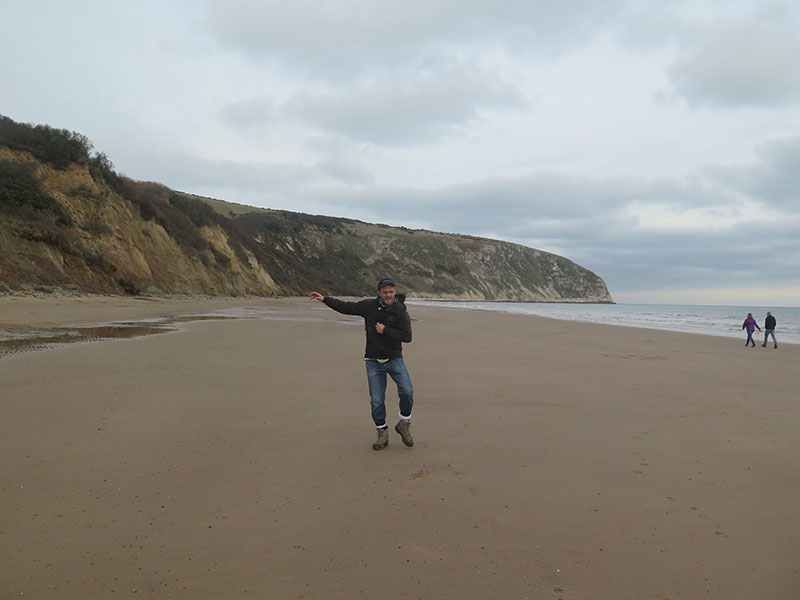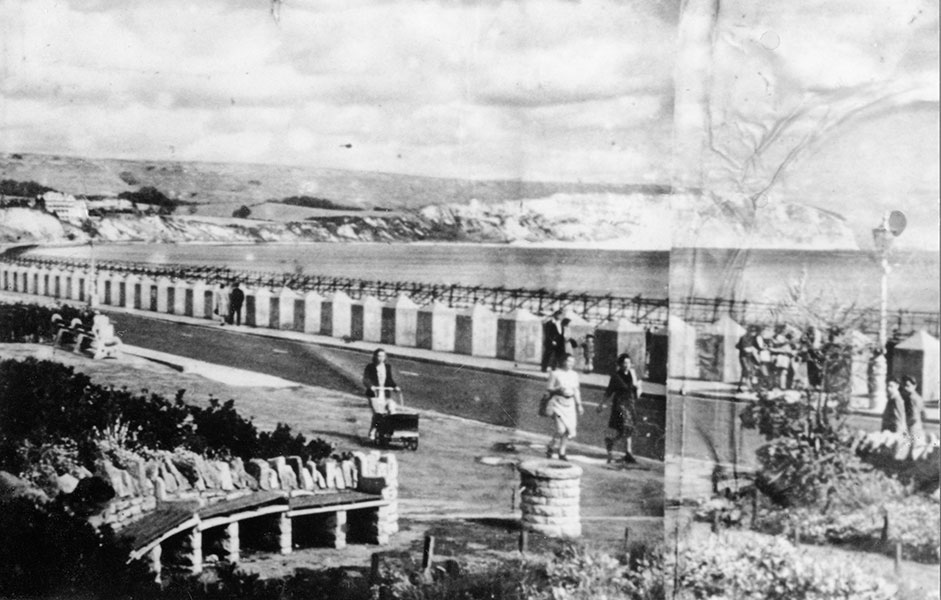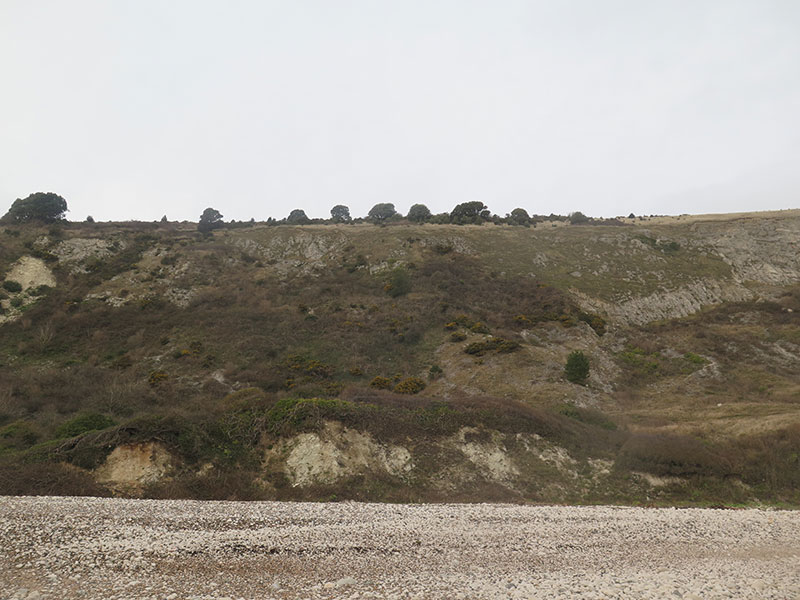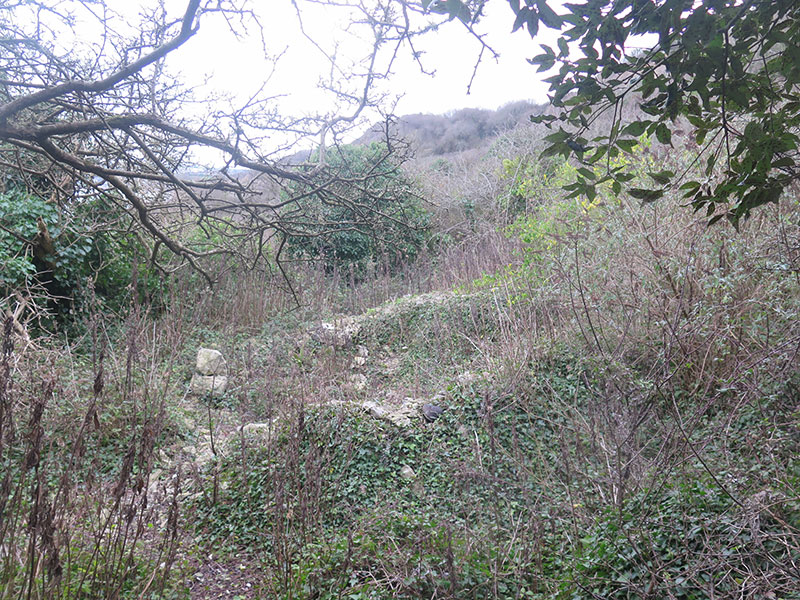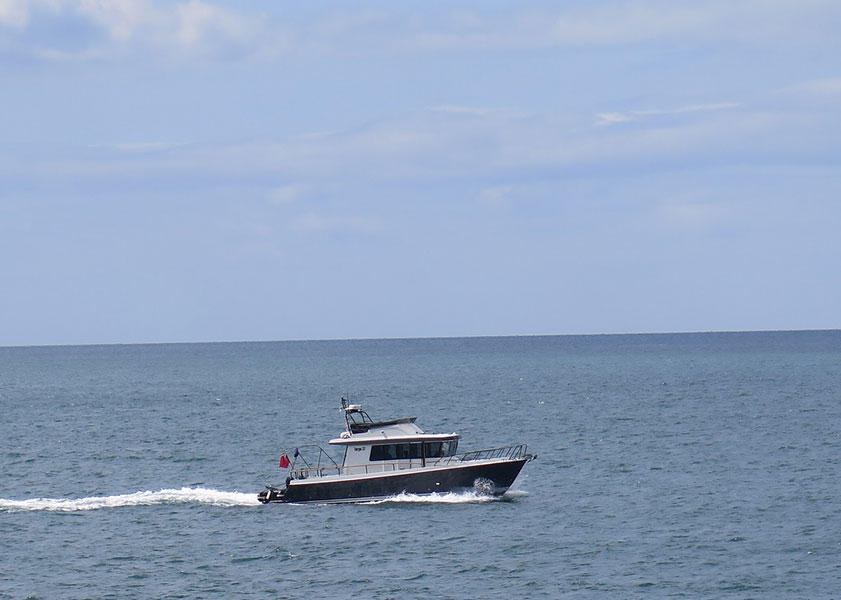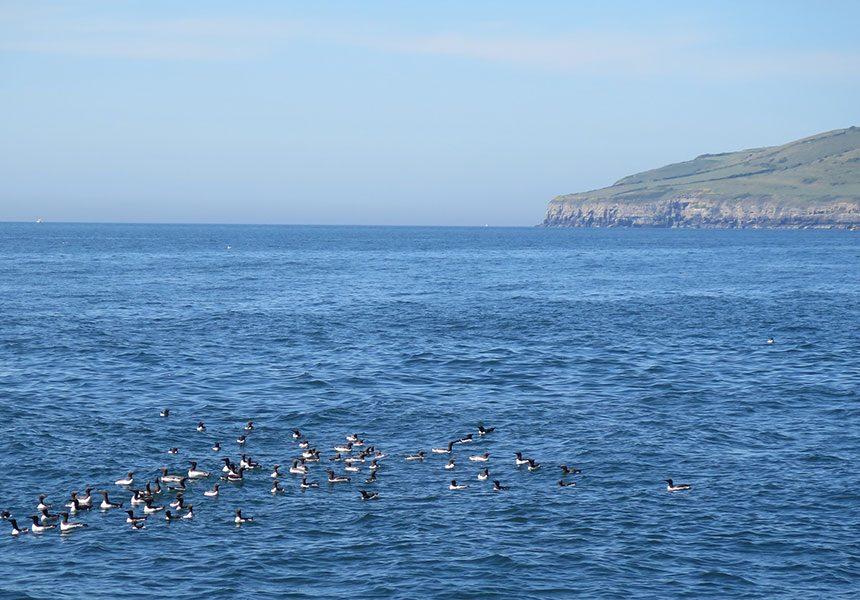97. Punfield Cove
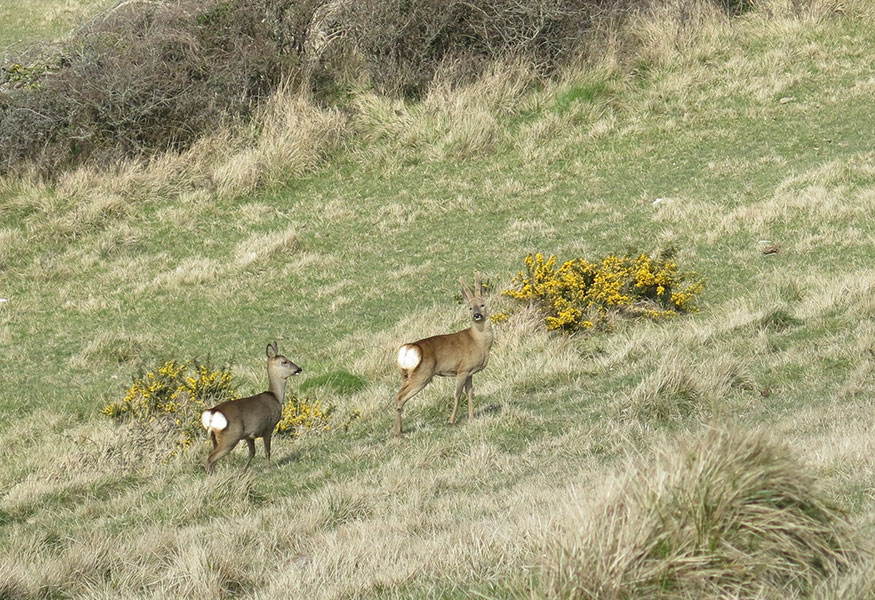
96. Spring Returns
April 5, 2025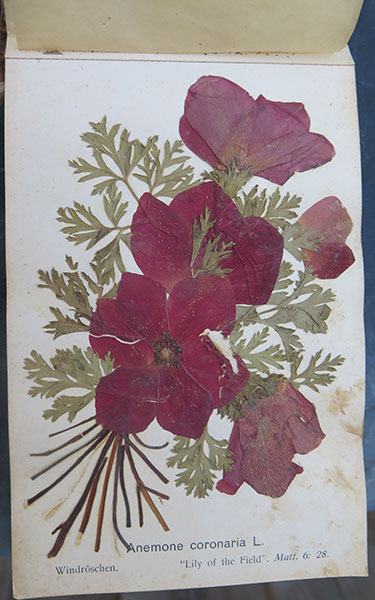
98. Where have All The Flowers Gone?
June 5, 2025T he north end of Swanage Bay, where it is enclosed by the chalk headland of Ballard Point, was a playground for us 12-year-old kids. We approached it through Ballard Estate, an array of wooden bungalows once forming a WWI army camp: one of these, decrepit and deserted, became our ‘haunted house’, a place to hang out in the evenings. During a game of hide and seek, I shut myself in a cupboard there and couldn’t get out. It didn’t take much banging and yelling for a friend to release me, but those few claustrophobic minutes are not forgotten.
The path from there down to the beach ran along one of those steep-sided little valleys they call chines. This one was known as Shep’s Hollow. In the undergrowth on either flank, we made camps, dividing into two hostile gangs which, armed with bows & arrows, or catapults, confronted each other across the stream that cut that small ravine. My group armed each reed arrow in clay with a sewing needle embedded in it. After baking the clay, those arrows became lethal weapons but when one of us hit a boy with one, even we realized they weren’t a good idea.
In the weeks leading up to November 5th, the English celebrate with fireworks the foiling ‘The Gunpowder Plot’, in which rebellious Catholics were caught trying to blow up the king and his Protestant government in the Houses of Parliament. We kids bought ‘bangers’, explosive fireworks which produced an annual surge of explosive accidents. One game was to make a mud dam across Shep’s Hollow stream and, inspired by a film, ‘The Dam Busters’ on the wartime bombing of German dams, we played at demolition, letting off ‘bangers’ in the dam. Then, in Nutwood, on the south flank of the chine, we would experiment with cigarettes. I doubt if any of us enjoyed them; we were merely playing at being grown up.
Punfield Cove is the angle between the north, shingle end of Swanage beach and the chalk cliff of Ballard Down. The name, from Pond Field, derived from its role as a source of fresh water. In those days a footpath, long lost in undergrowth, led up from the beach onto the downs. Beyond bushes, at the foot of the cliff was a pile of chalk with a hollow at its centre, which we called The Igloo and where we might camp to cook a tin of baked beans.
At first, that north end of the beach was out of bounds, sealed off by barbed wire. The shore was lined with rusty iron defences and concrete anti-tank structures known as ‘dragons’ teeth’, erected against a German invasion which never came. Worse, the clay cliffs along the beach had been laid with land mines. There was a scary warning: ‘Danger! Mines! Keep Out!’. Most of these mines were cleared in the late 1940s, although fragments of rusted iron bar and the brackets that held them together still lie amongst the shingle. A steamroller, which was being used to demolish the seafront ‘dragons’ teeth’ overdid it and stood for a week half on the beach and half on the pavement. Inevitably, some of the mines were missed. In 1955 five boys found one and, thinking it was a tin containing something nice, tried to open it. All were killed. We heard the explosion from school.
It was always worth scanning the beach for anything washed up that might be useful. One postwar wreck yielded oranges. I found a large tin of ground coffee and proudly lugged it home: my mother wouldn’t touch it. We did try making a coffee bomb, putting coffee and a banger into a jam jar. Potentially lethal, it failed because the coffee deadened the timid blast of the banger. It was on that stretch of beach that I found my first message in a bottle. Written in green ink on a paper napkin, it gave an address in Harlem, Holland. I wrote back, partly because my mother said Harlem was a centre of the Dutch chocolate industry, but there was no response. Most mysterious was a set of large, folded naval charts showing the entrance of Belize harbour. The paper was in good condition, so they can’t have come far. I cherished them for years but never visited Belize. Sometimes we scrambled out over the chalk boulders to Ballard Point. There, a long chalk rock created a tiny cove, but we lost interest in exploring there after narrowly escaping a bombardment of chalk fragments which fell down the cliff and shattered on the rocks unpleasantly close to us.
Older, we abandoned that end of Swanage Bay, preferring to bathe from Buck Shore, where there was a swimming club with diving boards on the battered timber Old Pier. Shep’s Hollow achieved a brief renewal of interest in 1959, one of those wonderful hot summers that very occasionally punctuate the British calendar. Robert got hold of a little wooden pontoon which we used down there and kids from the boarding section of school came there for illicit night swims. That summer continued well into autumn, as did their outings. Finally, two boys walking through Swanage at night were stopped by the police, who thought they seemed young to be out so late. The boys claimed they were on holiday and named a caravan site where they were staying. Unfortunately, the police knew that, with the season over, that site was closed. The story caused general excitement in Swanage’s quiet existence.
In the 1970s, Punfield Cove occasionally came up into conversation thanks to a guy who, seeking a reclusive life, built himself a hut in the undergrowth there. When they discovered his place, the police hassled him, but he was doing no harm and the landowner, unusually tolerant, raised no objection. To my generation he was known as Dirty Dick, merely because he wandered the town ragged and unshaven. When, on the death of Ralph Bankes, the principal landowner in Purbeck, much of the land, including Punfield Cove, passed to the National Trust. They attempted to evict him, but he had the support of local folk and had acquired some rights from his long residence there. He worked with some Swanage fishermen so the next generation called him ‘Dick the Fish’. He stayed at Punfield until, ageing and unwell, he passed his last years in a home.
Recently, a friend of mine and I, running out of ideas of places to revisit, decided to head for Punfield in search of his hut. Low spring tide, I was struck by the expanse of sand along a beach always made up of shingle. Some years back, the local council had imported sand dredged here from deepening the entrance of Poole Harbour. The clay cliffs, however, had suffered badly from landslips, as a result of heavy rainfall the previous year, one fall virtually sealing the mouth of Shep’s Hollow.
We struggled through the undergrowth beneath the chalk cliffs at the north end of the bay, looking for his place. I had only been there a couple of times long before, remembering it as a small wooden structure with an impressive book-shelf of ‘War Picture Library’ comics. Nothing like that remained, only a chalk enclosure, one wall housing a fireplace with a rusty grate. Perhaps the National Trust cleared it away to avoid anyone else settling there. We walked back through the dusk to end up with fish’n’chips on the seafront.

